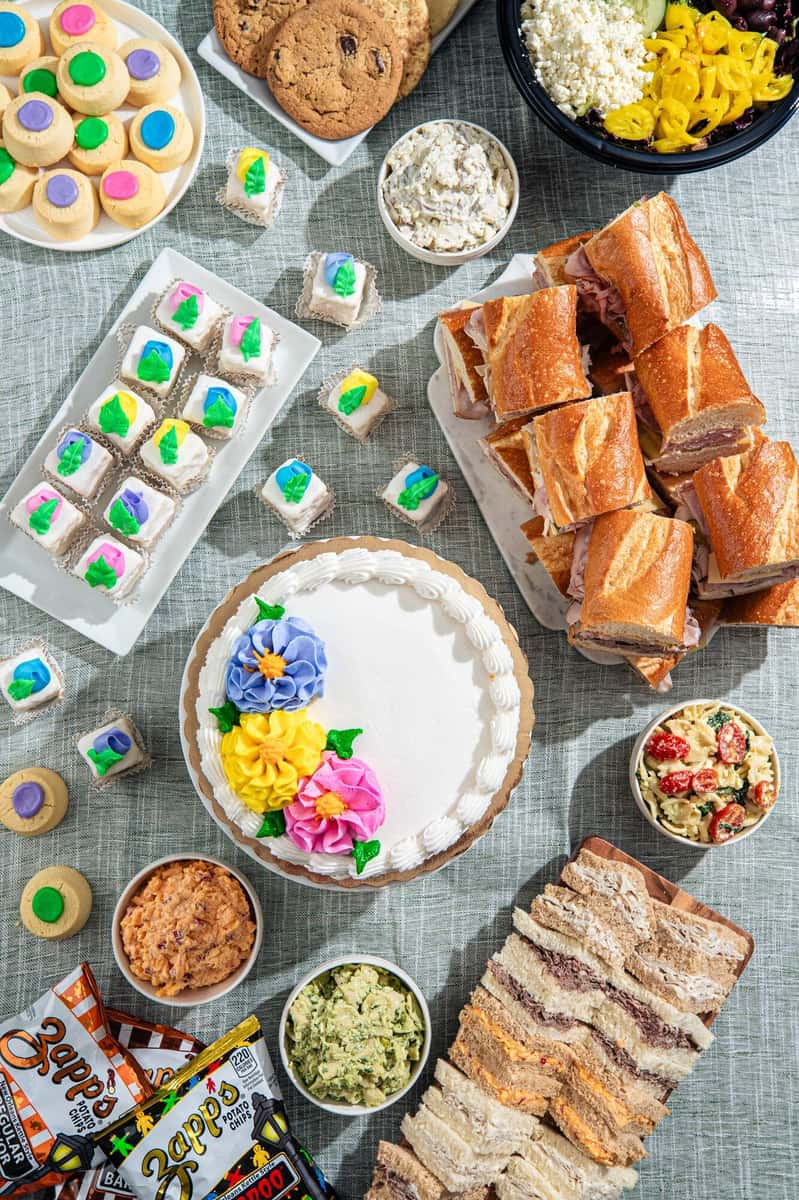Preparation a Birthday Party Maddington? Tips for an Excellent Party
Preparation a Birthday Party Maddington? Tips for an Excellent Party
Blog Article
Understanding the Art of Bakery Products: From Fresh Baked Breads to Tempting Pastries and Finger Foods
From the science behind the perfect loaf of bread, where fermentation and gluten advancement play crucial functions, to the finesse needed for developing layered breads, each aspect exposes an engaging story of workmanship. The flexibility of finger foods illustrates exactly how taste and texture can be artfully incorporated to engage diverse preference choices.
The Science of Bread Making
At the heart of every loaf of bread lies a remarkable interaction of chemistry and biology. The process of bread making starts with the mix of flour, water, salt, and yeast-- each component playing an essential duty in the final item. Flour has healthy proteins, mainly glutenin and gliadin, which, when mixed with water, type gluten (Birthday Catering Maddington). This flexible network is essential for capturing gases produced during fermentation.
Yeast, a living microorganism, ferments the sugars existing in the flour, generating co2 and alcohol at the same time. The co2 gas produces bubbles in the dough, creating it to climb and establish a light texture. The temperature level and moisture during fermentation significantly affect yeast activity and, consequently, the bread's flavor and structure.

Mastering Pastry Techniques
Just how can one attain the fragile balance of structure and flavor that defines remarkable bread? Understanding bread methods calls for a deep understanding of components, techniques, and the scientific research behind them. Fundamental to this craft is the selection of top notch ingredients-- flour, butter, sugar, and eggs-- each playing a crucial role in the end product's taste and structure.
The technique of lamination, which entails folding layers of dough and butter, creates the preferred flakiness in breads like croissants and puff bread. Precision in temperature level is important, as butter ought to remain cold to make sure optimal layers. Likewise, proper mixing methods, such as the creaming method for cakes, make certain also incorporation of air and fat, leading to a light and ventilated crumb.
Additionally, maintaining the right humidity degrees during baking can substantially influence the end result, making sure that pastries increase properly and attain that golden-brown coating. Lastly, the art of bread additionally demands persistence and technique; each effort improves one's skill and understanding of the complex equilibrium called for to produce tempting pastries that delight the senses. Mastery in these techniques inevitably distinguishes a knowledgeable pastry chef from an amateur.
Kinds of Finger Foods
The world of cooking delights expands beyond pastries to include a wide range of finger foods, which are celebrated for their comfort and convenience. These bite-sized treats are ideal for celebrations, offering a selection of flavors and appearances that provide to varied tastes buds.

On the sweeter side, tiny tarts and bite-sized cupcakes offer a wonderful finish to any dish, interesting those with a craving for sweets. Additionally, cheese and charcuterie boards work as an advanced option, enabling visitors to tailor their attacks with an array of meats, nuts, cheeses, and fruits.
Flavor Profiles in Baking
Cooking is a detailed dance of taste profiles that integrates sweet, mouthwatering, and umami notes to create an unified experience for the palate. Understanding this article these accounts is essential for bakers looking for to boost their productions.
Active ingredients such as chocolate and sugar introduce intricate wonderful notes that can either control or match various other flavors. Active ingredients like spices, cheeses, and natural herbs can change an easy dough right into a multifaceted taste experience.
Umami, frequently neglected in cooking, plays a significant duty in improving tastes. Active ingredients such as aged cheeses, fermented items, or perhaps certain nuts contribute to a savory depth that boosts general preference.
Additionally, the interplay of acidity from active ingredients like buttermilk or citrus zest can brighten tastes, supplying a refreshing counterpoint to sweet taste. By thoughtfully integrating these taste accounts, bakers can craft items that reverberate with varied palates, producing a memorable cooking experience. Ultimately, grasping taste accounts is vital to development on the planet of baking.
Essential Baking Equipments and Components
Recognizing taste accounts in cooking collections the phase for selecting the right tools and ingredients that facilitate the development of outstanding baked items. The structure of effective cooking hinge on having crucial devices available. Trick things consist of blending bowls, measuring cups, and spoons for precision, as well as a sturdy stand mixer or hand mixer for simple and easy blending. A dependable set of baking pans-- such as sheet frying pans, loaf frying pans, and cake frying pans-- is vital for achieving desired forms and appearances.
Flour serves as the foundation of many dishes; selecting the appropriate type-- be it pastry, all-purpose, or bread flour-- can drastically impact the end result. Baking powder and cooking soda are necessary for creating lift in cakes and breads.
Additionally, including flavor enhancers like vanilla remove, spices, and citrus passion can elevate your creations. By making sure accessibility to these essential devices and ingredients, bakers can with confidence start their culinary journey, crafting a varied range of fascinating baked goods.
Conclusion
Mastery in bread production, bread preparation, and finger food presentation reveals the intricate connections in between components and processes. Birthday Party Maddington. Discovering diverse flavor accounts enhances the baking experience, while necessary tools and components offer the foundation for success.
Just how straight from the source can one accomplish the delicate equilibrium of structure and flavor that specifies phenomenal bread? Fundamental to this craft is the option of anchor high-grade components-- flour, butter, sugar, and eggs-- each playing a crucial duty in the final item's taste and texture.

Comprehending taste accounts in cooking collections the stage for choosing the right tools and components that assist in the production of exceptional baked goods. Exploring diverse flavor profiles enriches the baking experience, while important tools and ingredients provide the foundation for success.
Report this page